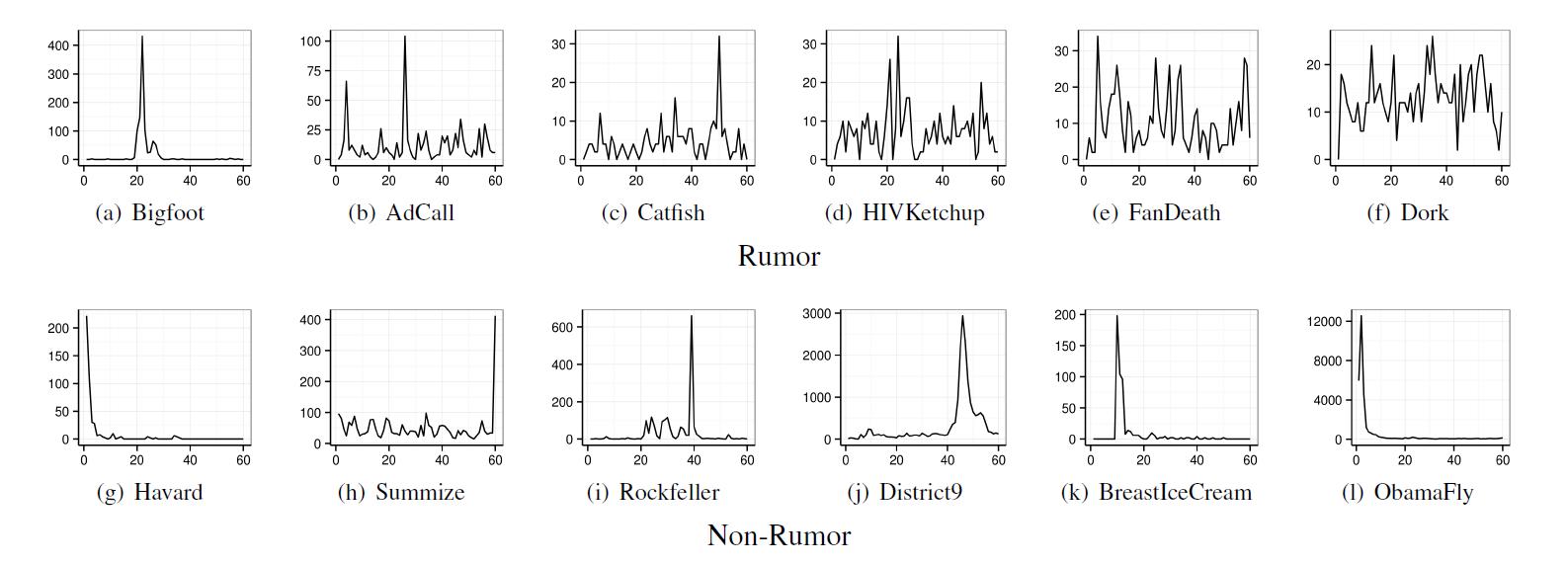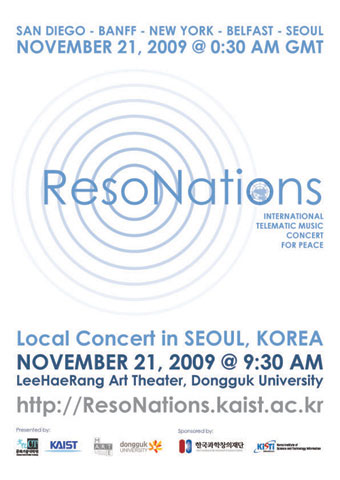Internet
-
 Is it possible to identify rumors on SNS?
Rumors
sporadically spread with people with fewer followers in the centerResearched
over 100 rumors in the US from 2006 to 2009 Is it
possible to filter information on SNS such as Twitter and Facebook? A research
team led by Professor Mee-Young Cha from the Department of Cultural Technology
Graduate School at KAIST, Professor Kyo-Min Jung of Seoul National University,
Doctor Wei Chen and Yajun Wang of Microsoft Asia, has developed a technology
that can accurately filter out information on Twitter to 90% accuracy. The
research not only deduced a new mathematical model, network structure, and
linguistic characteristics on rumors from SNS data, but is also expected to
enhance the effort to make secure technology to regulate Internet rumors. The team
analysed the characteristics of rumors in over 100 widespread cases in the US
from 2006 to 2009 on Twitter. The team gathered data, which included a range of
areas such as politics, IT, health and celebrity gossips, and their analysis
could identify rumors to 90% accuracy. The filtering was more accurate in
rumors that included slanders or insults. The
research team identified three characteristics of the spread of rumors. Firstly,
rumors spread continuously. Normal news spreads widely once and is mentioned
rarely again on media, but rumors tend to continue for years. Secondly,
rumors spread through sporadic participation of random users with no
connections. Rumors start from people with fewer followers and spread to the
more popular. This phenomenon is often observed in rumors concerning
celebrities or politicians. Lastly,
rumors have unique linguistic characteristics. Rumors frequently include words
(such as “it may be true,” “although not certain, I think,” “although I cannot
fully remember”) related to psychological processes that question, deny, or
infer the reliability of the information. Professor
Cha said, “This research deduced not only a statistical and mathematical model
but also is an integrated research on social psychological theory on the
characteristics of rumors that attract great attention from the society based
on ample data.” The results
were made public in IEEE International Conference on Data Mining last December
in Texas, USA.
2014.02.03 View 9487
Is it possible to identify rumors on SNS?
Rumors
sporadically spread with people with fewer followers in the centerResearched
over 100 rumors in the US from 2006 to 2009 Is it
possible to filter information on SNS such as Twitter and Facebook? A research
team led by Professor Mee-Young Cha from the Department of Cultural Technology
Graduate School at KAIST, Professor Kyo-Min Jung of Seoul National University,
Doctor Wei Chen and Yajun Wang of Microsoft Asia, has developed a technology
that can accurately filter out information on Twitter to 90% accuracy. The
research not only deduced a new mathematical model, network structure, and
linguistic characteristics on rumors from SNS data, but is also expected to
enhance the effort to make secure technology to regulate Internet rumors. The team
analysed the characteristics of rumors in over 100 widespread cases in the US
from 2006 to 2009 on Twitter. The team gathered data, which included a range of
areas such as politics, IT, health and celebrity gossips, and their analysis
could identify rumors to 90% accuracy. The filtering was more accurate in
rumors that included slanders or insults. The
research team identified three characteristics of the spread of rumors. Firstly,
rumors spread continuously. Normal news spreads widely once and is mentioned
rarely again on media, but rumors tend to continue for years. Secondly,
rumors spread through sporadic participation of random users with no
connections. Rumors start from people with fewer followers and spread to the
more popular. This phenomenon is often observed in rumors concerning
celebrities or politicians. Lastly,
rumors have unique linguistic characteristics. Rumors frequently include words
(such as “it may be true,” “although not certain, I think,” “although I cannot
fully remember”) related to psychological processes that question, deny, or
infer the reliability of the information. Professor
Cha said, “This research deduced not only a statistical and mathematical model
but also is an integrated research on social psychological theory on the
characteristics of rumors that attract great attention from the society based
on ample data.” The results
were made public in IEEE International Conference on Data Mining last December
in Texas, USA.
2014.02.03 View 9487 -
 MOU: KAIST-Korea Internet & Security Agency
KAIST signed a MOU with the Korea Internet & Security Agency for the development of IT and International Security.
As a result of the MOU interaction in ▲Exchange of personnel and materials for cooperative research for information protection ▲Information protection policy and technology ▲Education and training for developing information protection personnel, will be increased.
Director of Cyber Security Research Center Joo Dae Joon commented, “Cyber-attack on national infrastructure like DDOS attacks can threaten the nation’s system” and that “the two institutes will establish a response system against cyber-attacks and train experts in information protection”.
2012.01.31 View 6948
MOU: KAIST-Korea Internet & Security Agency
KAIST signed a MOU with the Korea Internet & Security Agency for the development of IT and International Security.
As a result of the MOU interaction in ▲Exchange of personnel and materials for cooperative research for information protection ▲Information protection policy and technology ▲Education and training for developing information protection personnel, will be increased.
Director of Cyber Security Research Center Joo Dae Joon commented, “Cyber-attack on national infrastructure like DDOS attacks can threaten the nation’s system” and that “the two institutes will establish a response system against cyber-attacks and train experts in information protection”.
2012.01.31 View 6948 -
 Sound of sex could alert internet porn filter by New Scientist, May 20, 2011
Software that can detect obscene contents from the internet has been developed by a research team at KAIST. The research team used a signal-processing technique, Randon Transform, to create spectrograms of a variety of audio clips, which can screen any pornographic sounds from websites. This audio-based screening method solves technological limits presented by automatic image-analysis systems that have already been used to catch unwanted pornography. New Scientist posted an online article on this development of new technology. Please copy and paste the following link to read more about the article.
http://www.newscientist.com/article/dn20498-sound-of-sex-could-alert-internet-porn-filter.html
2011.05.21 View 9106
Sound of sex could alert internet porn filter by New Scientist, May 20, 2011
Software that can detect obscene contents from the internet has been developed by a research team at KAIST. The research team used a signal-processing technique, Randon Transform, to create spectrograms of a variety of audio clips, which can screen any pornographic sounds from websites. This audio-based screening method solves technological limits presented by automatic image-analysis systems that have already been used to catch unwanted pornography. New Scientist posted an online article on this development of new technology. Please copy and paste the following link to read more about the article.
http://www.newscientist.com/article/dn20498-sound-of-sex-could-alert-internet-porn-filter.html
2011.05.21 View 9106 -
 Int'l Telematic Music Concert for Peace to Take Place on Nov. 20
Renowned musicians in five international locations perform new contemporary music works for peace through a real-time performance on the internet. Local audiences in Seoul, Banff, New York, San Diego and Belfast will also have a chance to hear a program.
In Seoul, the "International Telematic Music Concert for Peace" will be held at the LeeHaeRang Art Theater, Dongguk University, in Seoul on Nov. 20 at 9:30 a.m., under the presentation of KAIST"s Graduate School of Culture Technology and MARTE Lab, Dongguk University. Telematic music is real-time performance via the internet by musicians in different geographic locations.
The program of the concert includes "Hope"s Dream" by Mark Dresser and Sarah Weaver; "Disparate Bodies" by Pedro Rebelo, "Rock, Paper, Scissors" by Chris Chafe. The Korean act to be performed is "Green-colored Harmony" by Jun Kim.
In addition to the two Korean universities, the World Association of Former United Nations Internes and Fellows (WAFUNIF), University of California San Diego, the Banff Center of Canada and Queen"s University in Belfast are participating in the project.
The performance will take place on high-bandwidth internet with JackTrip audio software developed by Chris Chafe and Access Grid video software developed at Argonne National Laboratory.
"Connecting the five different cities together through super-speed Internet network and transmitting sound and images in real time is challenging technically. But, we also expect that more exciting results will be created in the course of transforming the sound into visual images," said Woon-Seung Yeo, a professor of the Graduate School of Culture Technology, who was responsible for visuals in the project.
2009.11.19 View 12413
Int'l Telematic Music Concert for Peace to Take Place on Nov. 20
Renowned musicians in five international locations perform new contemporary music works for peace through a real-time performance on the internet. Local audiences in Seoul, Banff, New York, San Diego and Belfast will also have a chance to hear a program.
In Seoul, the "International Telematic Music Concert for Peace" will be held at the LeeHaeRang Art Theater, Dongguk University, in Seoul on Nov. 20 at 9:30 a.m., under the presentation of KAIST"s Graduate School of Culture Technology and MARTE Lab, Dongguk University. Telematic music is real-time performance via the internet by musicians in different geographic locations.
The program of the concert includes "Hope"s Dream" by Mark Dresser and Sarah Weaver; "Disparate Bodies" by Pedro Rebelo, "Rock, Paper, Scissors" by Chris Chafe. The Korean act to be performed is "Green-colored Harmony" by Jun Kim.
In addition to the two Korean universities, the World Association of Former United Nations Internes and Fellows (WAFUNIF), University of California San Diego, the Banff Center of Canada and Queen"s University in Belfast are participating in the project.
The performance will take place on high-bandwidth internet with JackTrip audio software developed by Chris Chafe and Access Grid video software developed at Argonne National Laboratory.
"Connecting the five different cities together through super-speed Internet network and transmitting sound and images in real time is challenging technically. But, we also expect that more exciting results will be created in the course of transforming the sound into visual images," said Woon-Seung Yeo, a professor of the Graduate School of Culture Technology, who was responsible for visuals in the project.
2009.11.19 View 12413